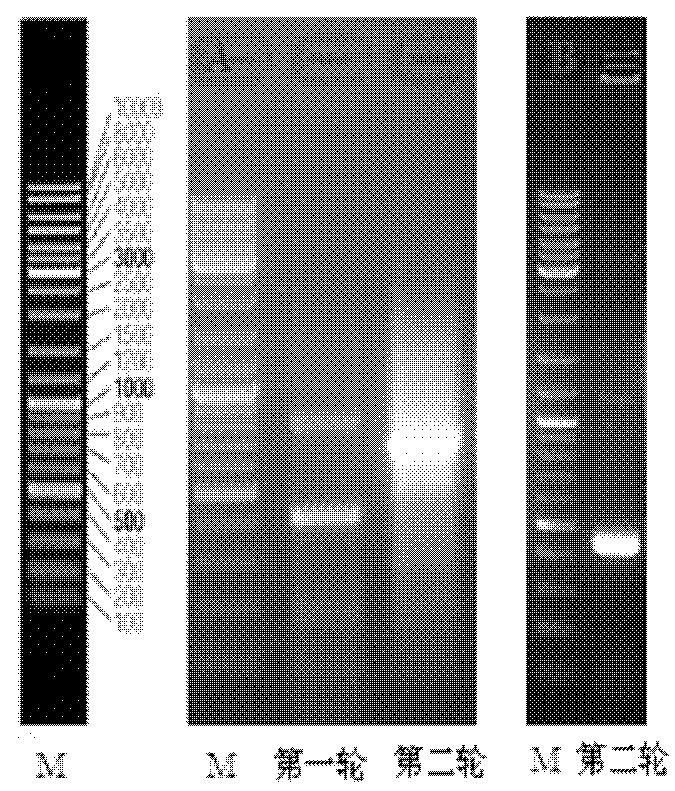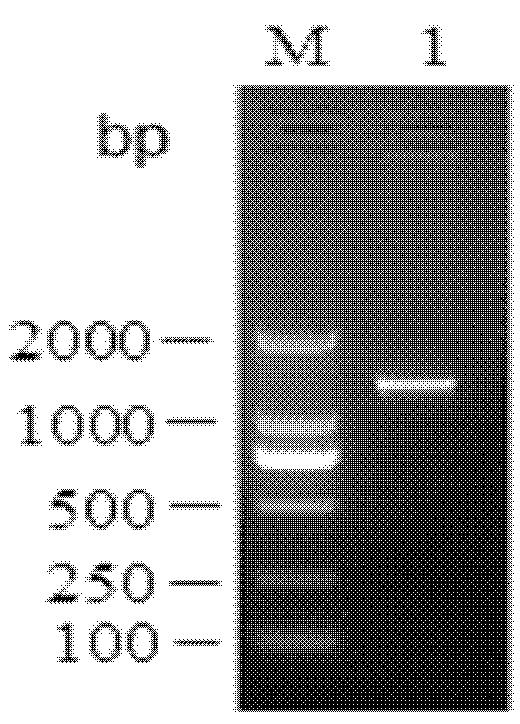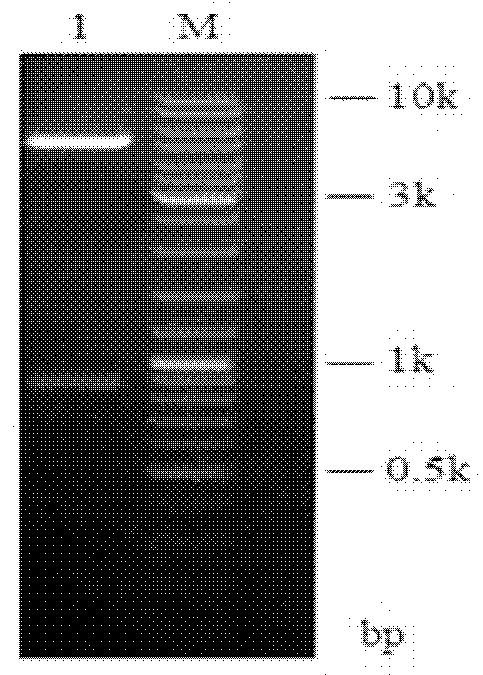Ultraspiracle protein of green plant bug, coding sequence, carrier and strain thereof
A technology of green ligus and air valves, applied in the field of agricultural science, can solve problems such as the rise of green ligus
- Summary
- Abstract
- Description
- Claims
- Application Information
AI Technical Summary
Problems solved by technology
Method used
Image
Examples
Embodiment 1
[0031] Embodiment 1: the acquisition of ALUSP gene
[0032] The TRIzol method was used to extract the total RNA of Lygus japonica, and the total RNA samples with good electrophoretic pattern and OD260 / OD280 value between 1.8 and 2.0 were selected and combined for mRNA purification, and the first-strand cDNA was synthesized by reverse transcription. The PCR reaction system was: 10 μl Total RNA, 4.0 μl 5X reaction buffer, 2 μl 10 mm old NTP, 1 μl ribonucleotide inhibitor, 2 μl reverse transcriptase, add ddH 2 O to a reaction volume of 20 μl. The parameters of the PCR reaction were: warm bath at 42°C for 60 minutes, and warm bath at 72°C for 10 minutes. The primers ALUSP-F (5'-CATTATGGGWGTYTAYAGYTGTG-3') and ALUSP-R (5'-AGHAGTTCATTCCAVCCTGCTC-3') suitable for PCR amplification were designed according to the conserved sequence of the known insect hyperventilation protein to obtain the hyperventilation protein of the green Lygus bug Conserved sequence, see SEQID: 3 in the sequenc...
Embodiment 2
[0034] The construction of embodiment 2 ALUSP gene prokaryotic expression vector
[0035]The method of constructing the prokaryotic expression vector containing the ALUSP gene T vector is as follows: the target gene and the pEGX-6P-1 vector that are connected to the above sequencing into the pMD18-T vector are both digested with restriction endonucleases EcoRI and XhoI, and the large fragments are ligated ( image 3 ). The enzyme digestion system is: 1.0 μl of each of the two restriction enzymes, 2.0 μl of 10×Buffer buffer, 10.0 μl of gene fragments with appropriate restriction sites, and ddH 2 Make up O to 20 μl, and bathe in water at 37°C for 3h. The ligation system is: 5.0 μl of the recovered vector after enzyme digestion, 10.0 μl of the gene fragment, 1.0 μl of T4 DNA ligase, 2.0 μl of 10×Buffer, and ddH 2 Make up O to 20μl, and react at 16°C for 12-16h. After the ligation product was transformed into Escherichia coli TOP10, positive clones were screened by PCR. Trans...
Embodiment 3
[0037] Example 3: Denaturation and renaturation of ALUSP fusion protein and purification of protein
[0038] Denaturation of inclusion body protein was performed according to the following steps: centrifuge at 4000g, 4°C for 15min, discard the supernatant, wash the bacteria twice with PBS, resuspend in PBS, break the cells under high pressure, centrifuge at 12000g, 4°C for 30min, retain the precipitated inclusion body, Add 60ml binding buffer (7mol L -1 Guanidine hydrochloride, 50mmol·L-1Tris, 2MmDTT, 0.1%Triton-100, pH8.0), resuspend the inclusion body, stir to dissolve, centrifuge at 16000g, 4℃ for 30min, keep the supernatant; then use 10 times the volume of the column bed Bindingbuffer to wash and equilibrate the column, the flow rate is 60ml h -1 ; Then put the sample (solution supernatant) on the column at a flow rate of 45ml h-1, collect the permeate, and wash the column with Bindingbuffer 10 times the volume of the column bed at a flow rate of 60ml h -1 ; Finally use ...
PUM
 Login to View More
Login to View More Abstract
Description
Claims
Application Information
 Login to View More
Login to View More - R&D
- Intellectual Property
- Life Sciences
- Materials
- Tech Scout
- Unparalleled Data Quality
- Higher Quality Content
- 60% Fewer Hallucinations
Browse by: Latest US Patents, China's latest patents, Technical Efficacy Thesaurus, Application Domain, Technology Topic, Popular Technical Reports.
© 2025 PatSnap. All rights reserved.Legal|Privacy policy|Modern Slavery Act Transparency Statement|Sitemap|About US| Contact US: help@patsnap.com



